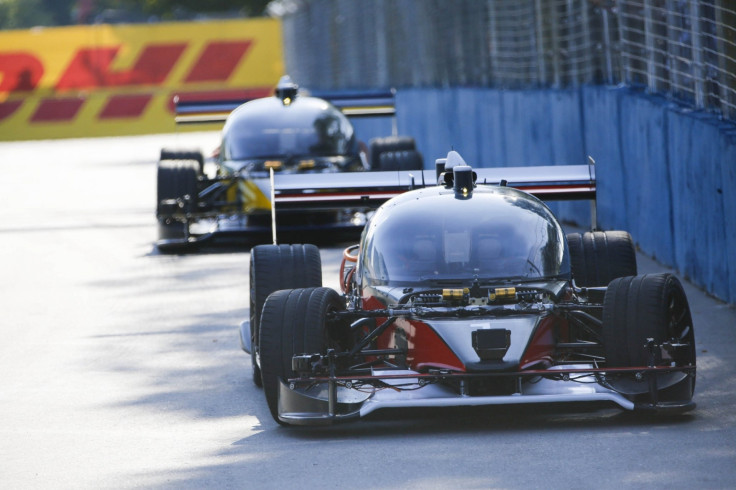Driverless cars crash in first ever robotic Formula E race in Buenos Aires
Driverless cars go head to head in the first ever race on a professional Formula E track in Buenos Aires.

The first ever race between self-driving cars was held at the Buenos Aires street circuit, ahead of the third round of the 2016/17 Formula E electric car championship — and ended in a crash.
Two DevBot race cars went head-to-head on the Puerto Madero circuit of the Formula E Buenos Aires ePrix on Saturday 18 February, with the winning car reaching a top speed of 115mph (185km/h), while the losing car got into an accident and took itself out of the race.
According to car news site Autoblog Argentina, the two DevBots bumped into each other at a curve during the race, causing one of the cars to smash into the barriers protecting the iconic Las Nareidas Fountain.
While the race was exciting for spectators to watch, it has to be noted that this was just a test, and the cars were both going at a more cautious speed than actual race car drivers would during a race.
Si, estos dos autos no tienen piloto... son los @roborace, pic.twitter.com/2sSX22XDyd
— Diego Zorrero (@dzorrero) February 18, 2017
Zafamos! Uno de los @roborace le pegó a la pared... al menos igual que un piloto. pic.twitter.com/BNkBQwkzKg
— Diego Zorrero (@dzorrero) February 18, 2017
"One of the cars was trying to perform a manoeuvre, and it went really full-throttle and took the corner quite sharply and caught the edge of the barrier," Roborace's chief marketing officer Justin Cooke told BBC News.
"It's actually fantastic for us because the more we see these moments the more we are able to learn and understand what was the thinking behind the computer and its data. The car was damaged, for sure, but it can be repaired. And the beauty is no drivers get harmed because... there is no-one in them."
Robots want to race too
The DevBot is a self-driving racing car that is based on a Le Mans Prototype racer, but the twist is that it features both an electric powertrain and artificial intelligence so that it can drive autonomously.
The cars tested in Buenos Aires are development vehicles that can also be driven by humans. But when the Roborace championship kicks off for real it is hoped the cars will look more like a concept produced by Daniel Simon, a German designer who is known for envisioning the futuristic automobiles seen in Hollywood blockbuster sci-fi films like Tron: Legacy, Oblivion and Captain America.

The idea is that one day, there will be a robotic version of the Formula E championships whereby cars in the league are trained by a human driver. When the race starts, computer algorithms govern how well the robotic car is able to deal with obstacles and make decisions to accelerate, make sharp turns and dodge to beat opponents, and humans just have to watch and hope for the best.
Eventually over time, the data being collected by the car in real time will enable it to make better decisions, and humans can tweak the software to make their racer better, which will hopefully lead to a more exciting race, since there is no danger of humans getting hurt.
RoboRace
The robotic racing league will be called RoboRace and the autonomous cars will be showcased on Formula E circuits during the 2016/2017 season as well as at one-off events at major cities around the world including New York, Berlin, Paris, Brussels, Paris, Mexico City and Montreal.
A lot of details about the Roboracers are still under wraps, but so far we know that Nvidia is proving the Drive PX 2 supercomputer for the cars, while Michelin is developing "next generation" energy-efficient motorsport tires, and smart electric truck maker Charge will provide all the car's power electronics.
All the cars will be the same but each team will be responsible for coding their own algorithms and the cars will eventually race at 186mph.
© Copyright IBTimes 2024. All rights reserved.






